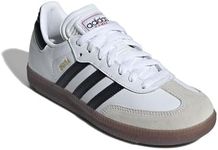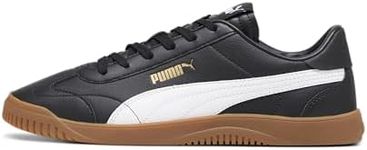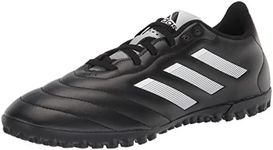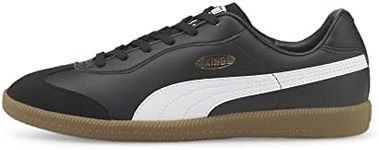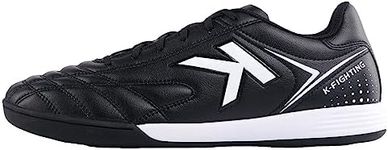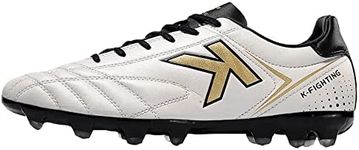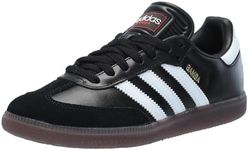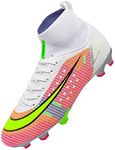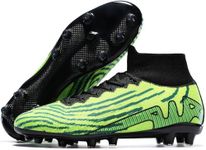Buying Guide for the Best Indoor Soccer Shoes
Choosing the right indoor soccer shoes is crucial for both performance and comfort. The right pair can enhance your agility, provide better control, and reduce the risk of injury. When selecting indoor soccer shoes, consider the type of surface you'll be playing on, your playing style, and the fit of the shoe. Here are some key specifications to help you make an informed decision.OutsoleThe outsole is the bottom part of the shoe that comes in direct contact with the playing surface. For indoor soccer, a non-marking rubber outsole is essential as it provides the necessary grip on indoor surfaces like gym floors or artificial turf. The grip helps in quick movements and prevents slipping. Look for shoes with a flat, patterned outsole for better traction. If you play on different surfaces, consider a versatile outsole that can handle various types of indoor courts.
Upper MaterialThe upper material of the shoe affects both comfort and ball control. Common materials include synthetic leather, mesh, and genuine leather. Synthetic leather is durable and often more affordable, while mesh offers breathability, keeping your feet cool during intense play. Genuine leather provides a superior touch and comfort but may require more maintenance. Choose the material based on your preference for comfort, durability, and how the shoe feels when controlling the ball.
Fit and ComfortA good fit is essential for performance and to avoid injuries. Indoor soccer shoes should fit snugly but not too tight. There should be a small space (about a thumb's width) between your toes and the end of the shoe. Consider the width of your feet as well; some brands offer wider options. Try on the shoes with the socks you plan to wear during play to ensure the best fit. Comfort features like padded insoles and ankle support can also enhance your playing experience.
WeightThe weight of the shoe can affect your speed and agility on the court. Lighter shoes allow for quicker movements and less fatigue, which is beneficial for fast-paced indoor soccer. However, lighter shoes may offer less protection and durability. Heavier shoes might provide more support and cushioning but can slow you down. Choose a weight that balances your need for speed with the level of protection and support you require.
CushioningCushioning in indoor soccer shoes helps absorb impact and provides comfort during play. Look for shoes with good midsole cushioning, often made from materials like EVA (ethylene-vinyl acetate) or foam. Adequate cushioning can reduce the strain on your feet and joints, especially if you play on hard surfaces. If you have a history of foot or joint issues, prioritize shoes with better cushioning to help prevent injuries.
DurabilityDurability is important to ensure your shoes last through many games and practices. Look for shoes with reinforced areas, especially around the toe and heel, as these parts endure the most wear and tear. High-quality stitching and durable materials like synthetic leather or reinforced mesh can extend the lifespan of your shoes. If you play frequently, investing in a more durable pair can save you money in the long run.
